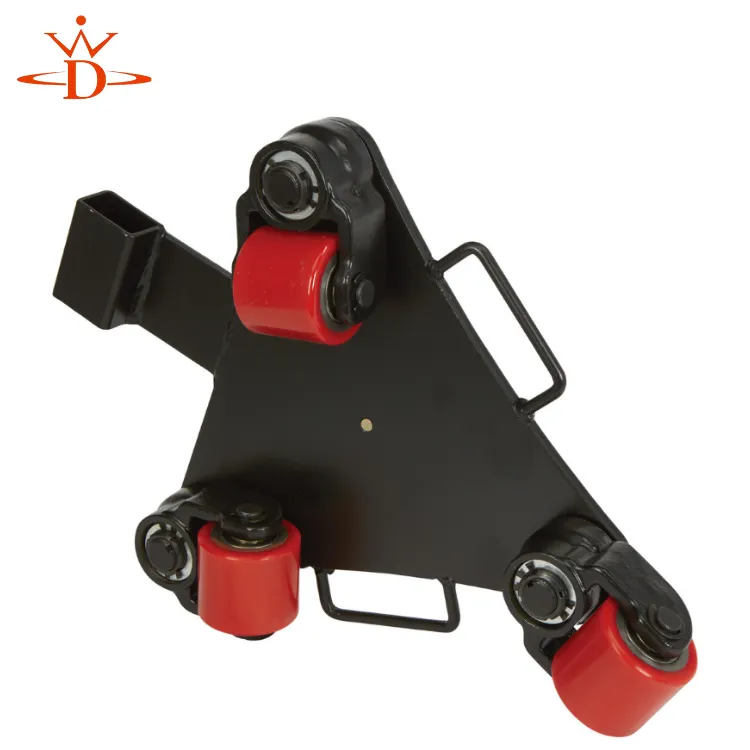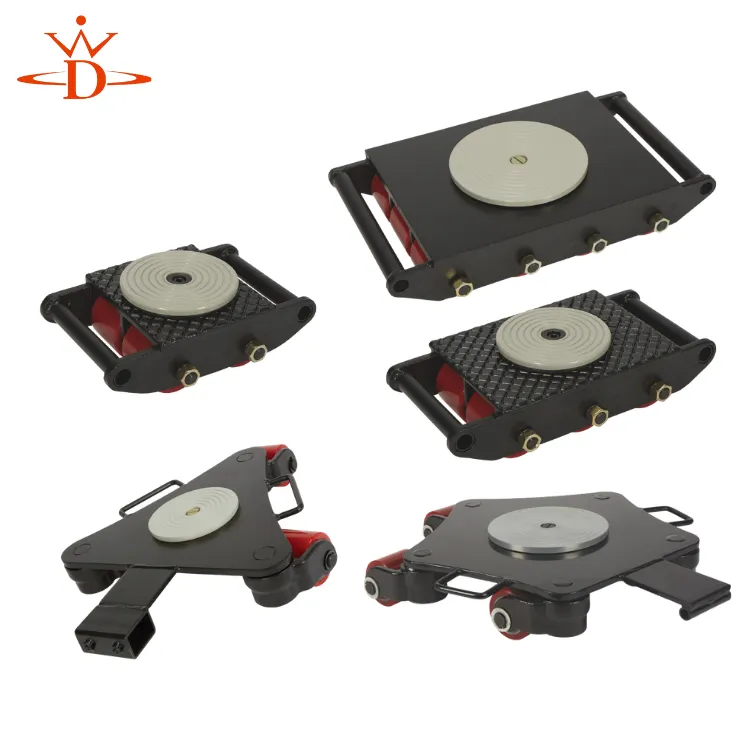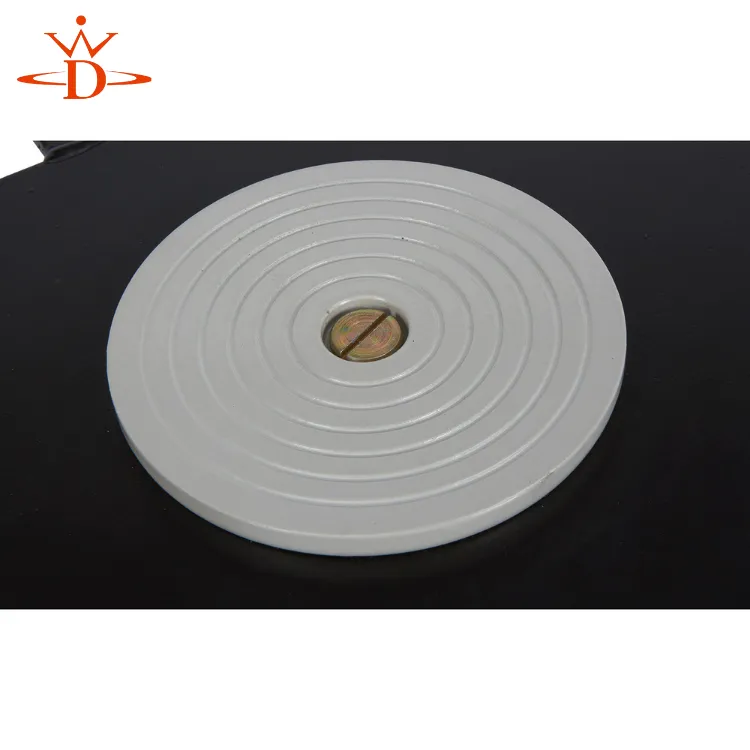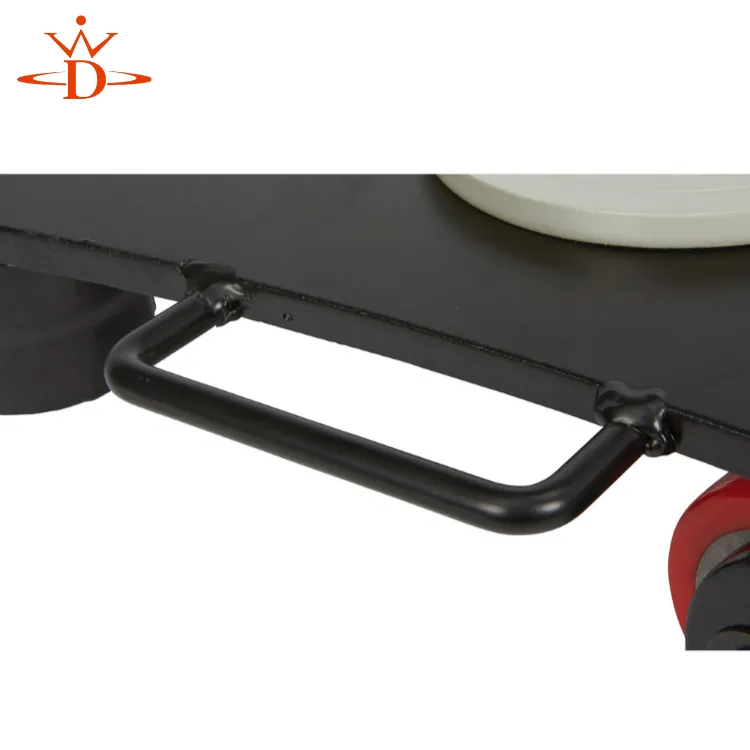Large Equipment Movers | Safe & Specialized Industrial Equipment Moving
Navigating the Complexities of Heavy Equipment Relocation: Industry Trends and Innovations
In the dynamic landscape of industrial operations, the efficient and safe relocation of heavy machinery is paramount. This specialized task relies on robust and reliable equipment designed to handle immense loads with precision and control. The market for large equipment movers is experiencing significant evolution, driven by advancements in materials science, engineering design, and operational safety protocols. Modern industrial facilities, from manufacturing plants to power generation stations, continually demand solutions that minimize downtime, enhance worker safety, and withstand the rigors of continuous use.
Current industry trends emphasize several key areas. Firstly, there's a growing demand for enhanced maneuverability and adaptability, particularly with the rise of increasingly complex and compact factory layouts. This necessitates solutions like 360° rotational capabilities and low-profile designs. Secondly, material innovation is leading to longer service life and reduced maintenance, with advanced polymers and high-grade alloys becoming standard. Thirdly, safety standards are becoming more stringent, requiring movers to comply with international certifications and feature intrinsic safety mechanisms. Finally, the integration of smart technologies, while still nascent, points towards future developments in load monitoring and remote control.
These trends underscore the critical role that specialized industrial movers play in ensuring operational continuity and project success. Manufacturers like Dawei Hoisting are at the forefront, offering products such as the Dawei Machinery Mover 360° Rotation Type Machinery Mover (3000-6000 Kgs), which embodies many of these advancements.

Figure 1: High-capacity machinery mover designed for robust industrial applications.
The Engineering Behind Heavy-Duty Mobility: Manufacturing Process of Large Equipment Movers
The creation of high-performance large equipment movers is a testament to precision engineering and stringent quality control. The manufacturing process typically involves several critical stages, each contributing to the final product's strength, durability, and reliability. Understanding this process highlights the inherent quality and safety features integrated into these vital tools.
1. Materials Selection and Preparation
- Structural Components: High-grade alloy steels, such as 40Cr or 45#, are selected for their superior tensile strength and fatigue resistance. These materials are crucial for the main body and load-bearing platforms.
- Wheels/Rollers: Polyurethane (PU), nylon, or specialized steel compounds are chosen based on the intended load capacity, floor protection requirements, and resistance to chemicals or abrasion. For example, Dawei often utilizes wear-resistant PU wheels for their excellent load distribution and floor protection characteristics.
- Bearings and Axles: Precision-machined, hardened steels are used for axles, paired with sealed, high-capacity bearings to ensure smooth operation under extreme loads and minimize rolling resistance.
2. Core Manufacturing Processes
- Casting/Forging: The main housing components and wheel hubs often undergo casting or forging processes. Forging, in particular, refines the grain structure of the metal, enhancing its strength and durability, critical for components subjected to high compressive and shear stresses.
- CNC Machining: Precision parts, including axles, bearing seats, and swivel plates, are manufactured using Computer Numerical Control (CNC) machining. This ensures exceptionally tight tolerances (e.g., ±0.02 mm), which are vital for smooth articulation, efficient load transfer, and long service life.
- Welding and Fabrication: Structural elements are precisely welded using advanced techniques (e.g., MIG/TIG welding) by certified welders. Post-weld inspections (e.g., ultrasonic testing, dye penetrant inspection) ensure joint integrity.
3. Surface Treatment and Assembly
- Corrosion Resistance: Components are treated with advanced surface coatings like powder coating, electroplating (e.g., zinc or nickel), or hot-dip galvanization. This provides superior corrosion resistance, extending the service life of the movers, especially in harsh industrial environments such as those found in the petrochemical or marine sectors. This is a significant advantage, reducing long-term maintenance costs.
- Final Assembly: Skilled technicians assemble the various components, ensuring proper fitment of wheels, bearings, axles, and swivel mechanisms. Load platforms are securely fastened, and all moving parts are lubricated.
4. Quality Control and Testing Standards
- Every Dawei large equipment movers unit undergoes rigorous testing, adhering to international standards such as ISO 9001 for quality management and ANSI B30.1 for safety standards.
- Load Testing: Each mover is subjected to static and dynamic load tests exceeding its rated capacity (typically 125% static, 110% dynamic) to verify structural integrity and wheel performance.
- Fatigue Testing: Critical components are tested for fatigue life under cyclic loading conditions to simulate prolonged operational stress.
- Environmental Testing: For specialized applications, components may undergo tests for resistance to extreme temperatures, humidity, or corrosive agents.
The meticulous attention to detail during manufacturing ensures an extended service life, often exceeding 10-15 years with proper maintenance. This robust construction also contributes to energy saving by minimizing rolling friction, thereby reducing the force required for movement. Target industries include petrochemical, metallurgy, power generation, water supply & drainage, heavy manufacturing, and aerospace, all of which demand movers with exceptional reliability and resistance to challenging operational conditions.
Technical Specifications: Dawei Machinery Mover 360° Rotation Type (3000-6000 Kgs)
Precision in specifications is crucial for industrial clients when selecting large equipment movers. The Dawei Machinery Mover exemplifies advanced design tailored for heavy-duty applications, offering both robust capacity and exceptional maneuverability. Below are detailed technical parameters for this model, showcasing its capabilities:
Product Specification Table: Dawei Machinery Mover 360° Rotation Type
| Parameter | Details |
|---|---|
| Product Name | Dawei Machinery Mover 360° Rotation Type Machinery Mover |
| Capacity Range | 3000 Kgs (3 Ton) to 6000 Kgs (6 Ton) per unit |
| Rotation Type | 360° Rotational Platform |
| Wheel Material | High-grade Polyurethane (PU) or Nylon (optionally Steel) |
| Number of Wheels | Typically 4-8 wheels per unit, depending on capacity |
| Body Material | Forged Alloy Steel (e.g., 40Cr) |
| Surface Treatment | Durable Powder Coating for corrosion resistance |
| Low Profile Design | Minimizes lifting height, enhances stability |
| Load Platform | Anti-slip rubber pad for secure load placement |
| Certifications | CE, ISO 9001 |
| Operating Temperature | -20°C to +50°C (standard operating conditions) |
The 360° rotational platform is a critical feature, allowing operators to change the direction of movement without repositioning the entire mover, significantly enhancing efficiency in tight spaces. The choice of wheel material is often customizable to suit different floor types and environmental conditions, ensuring optimal performance and protection of industrial flooring.
Application Scenarios and Real-World Case Studies for Industrial Movers
The versatility and robustness of industrial movers make them indispensable across a wide array of heavy industry sectors. From intricate factory reconfigurations to the precise installation of massive components, these tools are engineered to meet the most demanding challenges.
Typical Application Scenarios:
- Manufacturing Plant Relocation/Reconfiguration: Moving production lines, stamping presses, CNC machines, and assembly equipment within or between facilities.
- Power Generation: Installation and maintenance of turbines, generators, transformers, and switchgear in thermal, hydro, or nuclear power plants.
- Oil & Gas/Petrochemical: Positioning heavy valves, pumps, compressors, and pipeline sections in refineries and processing plants where space can be restricted and safety is paramount.
- Shipbuilding: Maneuvering large fabricated sections, engines, and other marine components during construction or repair.
- Heavy Civil Engineering: Placement of structural steel beams, precast concrete elements, or specialized construction equipment on site.
- Water Treatment Facilities: Installing large pumps, filtration tanks, and chemical dosing equipment.
Application Case Studies:
Case Study 1: Automotive Stamping Press Relocation
An automotive manufacturer needed to relocate a 50-ton stamping press within their facility to optimize a new production line layout. Traditional methods involving overhead cranes would have required extensive dismantling and re-assembly, leading to significant downtime. By utilizing a system of four Dawei 6000 Kg industrial equipment movers, the press was safely lifted onto the movers using hydraulic jacks, then precisely navigated across the factory floor. The 360° rotation capability of the movers allowed for fine adjustments in tight corridors, reducing the relocation time by 60% compared to previous methods and preventing damage to the factory floor. This minimized production interruption and delivered substantial cost savings.
Case Study 2: Substation Transformer Installation
A utility company faced the challenge of installing a new 40-ton electrical transformer within an existing substation where overhead crane access was limited due to live infrastructure. A custom arrangement involving multiple Dawei machinery dolly units, precisely synchronized, was employed. The low-profile design allowed the transformer to be slid beneath existing bus bars, and the robust PU wheels protected the epoxy-coated floor from damage. This approach circumvented the need for costly and time-consuming temporary structural modifications, demonstrating superior control and safety in a high-risk environment.

Figure 2: Precision movement of heavy machinery within a plant using robust industrial movers.
Technical Advantages and Adherence to Standards
The selection of appropriate large equipment movers is a strategic decision for any industrial enterprise. The advantages offered by well-engineered solutions directly impact operational efficiency, safety, and long-term cost of ownership. Dawei Hoisting's commitment to Google's (Expertise, Experience, Authoritativeness, Trustworthiness) guidelines is evident in its product design, manufacturing excellence, and customer-centric approach.
Expertise in Design and Engineering:
- Optimized Load Distribution: Our movers feature a multi-wheel configuration with a precision-machined load platform, ensuring even weight distribution across the rollers. This minimizes point loading on industrial floors and enhances stability for top-heavy machinery.
- Low Friction Movement: Utilizing sealed precision bearings (e.g., tapered roller bearings for high axial and radial loads) combined with advanced wheel materials like high-density polyurethane (shore hardness 90A-95A) drastically reduces rolling resistance. This translates to less force required for movement, potentially allowing for smaller pulling mechanisms (e.g., smaller tuggers or fewer personnel), contributing to energy savings and reduced operational strain.
- Corrosion Resistance: Forged alloy steel bodies are treated with multi-layer powder coating, providing superior resistance to industrial chemicals, humidity, and abrasive environments. This extends the lifespan of the mover significantly, reducing replacement frequency and associated costs.
Experience Through Practical Application:
- Thousands of Dawei movers are deployed globally, facilitating tasks from minor equipment repositioning to large-scale factory moves. Customer feedback consistently highlights the intuitive operation, reliable performance, and significant time savings.
- Our products have been integral to projects involving the installation of heavy presses in automotive plants, setting up CNC machining centers in aerospace facilities, and routine maintenance tasks in chemical processing plants. These real-world applications underscore the practical benefits and proven reliability.
Authoritativeness and Certifications:
- Dawei Hoisting holds ISO 9001:2015 certification for quality management, ensuring consistent manufacturing processes and product excellence. Our products also carry CE certification, affirming compliance with European safety standards.
- With over two decades of experience in the hoisting and material handling industry, Dawei has established itself as a trusted partner for leading global manufacturers, construction firms, and logistics providers.
- Our engineering team continuously innovates, referencing authoritative industry benchmarks and adhering to standards published by organizations like the American National Standards Institute (ANSI) for rigging and lifting equipment.
Product Comparison: Dawei Machinery Mover vs. Standard Machinery Dolly
To illustrate the tangible benefits, a comparison of the Dawei Machinery Mover against a generic fixed-direction machinery dolly highlights key differentiators:
| Feature | Dawei 360° Rotation Mover | Generic Fixed Dolly |
|---|---|---|
| Maneuverability | Full 360° rotation; precise directional changes without lifting | Fixed direction; requires lifting/repositioning for turns |
| Load Platform | Anti-slip rubber pad, larger contact area, low profile | Often bare metal, smaller surface, higher profile |
| Wheel Material & Bearings | High-grade PU/Nylon with precision sealed bearings for low friction & floor protection | Basic steel or solid nylon, often simple sleeve bearings, higher friction |
| Body Construction | Forged alloy steel, powder coated for corrosion resistance | Often cast iron or fabricated mild steel, basic paint finish |
| Operational Safety | Enhanced stability, controlled movement, adherence to international safety standards | Higher risk of instability, less controlled movement, minimal certifications |
| Service Life | 10-15+ years with proper maintenance, due to durable materials and precision engineering | Often 3-5 years, prone to wear and deformation, especially under sustained heavy loads |

Figure 3: Detailed view of the rotational mechanism and robust wheel construction.
Customized Solutions for Unique Industrial Challenges
While standard large equipment movers offer exceptional utility, many industrial applications present unique challenges that necessitate bespoke solutions. Recognizing that a one-size-fits-all approach is insufficient for complex heavy lifting and moving scenarios, Dawei Hoisting specializes in developing customized movers tailored to specific client requirements.
Factors Driving Customization:
- Non-Standard Load Profiles: Machinery with uneven weight distribution, extremely wide or narrow bases, or unusually high centers of gravity requires specially designed platforms or multiple synchronized movers.
- Environmental Extremes: Operations in cleanroom environments demand non-shedding, anti-static wheels and stainless steel components. Hazardous areas (e.g., ATEX zones) require spark-proof materials and specialized coatings. Extreme temperatures necessitate specific bearing lubricants and materials.
- Floor Conditions: Delicate or uneven flooring might require larger wheel diameters, pneumatic tires, or track-based systems to distribute weight more broadly and prevent damage.
- Maneuverability Requirements: Extremely confined spaces might call for omnidirectional movement systems or remote-controlled units to enhance safety and precision.
- Integration with Existing Systems: Custom movers may need to interface with existing jacking systems, towing vehicles, or automation platforms.
Dawei's engineering team works closely with clients through a consultative process, from initial conceptualization and finite element analysis (FEA) to prototyping and final fabrication. This ensures that every customized solution not only meets but exceeds the functional and safety requirements of the most challenging projects, upholding the highest standards of .
Trustworthiness: FAQ, Lead Time, Warranty, and After-Sales Support
Establishing trust is fundamental in B2B relationships, particularly when dealing with critical equipment like large equipment movers. Dawei Hoisting is committed to transparency and comprehensive support throughout the product lifecycle.
Frequently Asked Questions (FAQ):
- Q: What is the maximum load capacity for Dawei machinery movers?
A: Our standard range includes movers from 3,000 Kgs to 100,000 Kgs per unit. Custom solutions can be engineered for even higher capacities. - Q: How do I select the correct wheel material for my application?
A: Polyurethane (PU) wheels are ideal for sensitive floors (e.g., epoxy, polished concrete) due to their shock absorption and non-marking properties. Nylon offers high hardness and chemical resistance, suitable for rougher industrial floors. Steel wheels are for extremely heavy loads on very robust or sacrificial floors. Our technical team can assist in selecting the optimal material based on your specific floor type and load. - Q: Are Dawei movers safe for use in confined spaces?
A: Yes, models like the 360° Rotation Type are specifically designed for superior maneuverability in tight areas, reducing the risk of collisions and improving operational safety. - Q: What maintenance is required for these movers?
A: Routine inspection of wheels and bearings for wear, and periodic lubrication of swivel mechanisms (where applicable) are recommended. Detailed maintenance guides are provided with each product.
Lead Time and Fulfillment:
Standard Dawei machinery movers typically have a lead time of 2-4 weeks from order confirmation to shipment, depending on order volume and stock availability. For customized solutions, lead times vary based on design complexity and manufacturing processes, usually ranging from 6-12 weeks. We strive to provide accurate timelines and regular updates throughout the fulfillment process.
Warranty Commitments:
Dawei Hoisting provides a standard 12-month warranty on all large equipment movers, covering defects in materials and workmanship under normal operating conditions. Extended warranty options are available upon request. Our commitment is to ensure the longevity and reliable performance of our equipment.
Customer Support and After-Sales Service:
Our dedicated customer support team is available to assist with product selection, technical inquiries, and troubleshooting. We offer:
- Technical Assistance: Expert guidance from our engineering team for complex applications or operational challenges.
- Spare Parts Availability: A comprehensive inventory of genuine spare parts ensures minimal downtime for repairs or replacements.
- Training: On-site or virtual training for your operational staff on the safe and efficient use of Dawei movers.

Figure 4: A clear view of the robust construction and ergonomic design of Dawei movers.
Conclusion
The effective management of heavy machinery movement is a cornerstone of modern industrial productivity and safety. As industries continue to evolve, the demand for sophisticated and reliable large equipment movers will only intensify. Dawei Hoisting, through its unwavering commitment to engineering excellence, rigorous manufacturing processes, and comprehensive customer support, stands as a premier provider of solutions that not only meet but anticipate these evolving needs. By prioritizing robust design, advanced materials, and adherence to international quality and safety standards, Dawei ensures that clients can execute even the most challenging relocation projects with confidence, efficiency, and utmost safety. Investing in high-quality industrial movers is not just a procurement decision; it is a strategic investment in operational continuity and long-term success.
References:
- International Organization for Standardization (ISO). (2015). ISO 9001:2015 Quality management systems – Requirements.
- American National Standards Institute (ANSI) / American Society of Mechanical Engineers (ASME). (2014). ASME B30.1: Jacks, Industrial Rollers, Air Casters, and Telescopic Hydraulic Gantry Systems.
- European Committee for Standardization (CEN). (2006). EN ISO 12100: Safety of machinery – General principles for design – Risk assessment and risk reduction.
- Machinery Lubrication Magazine. (2023). Selecting the Right Lubricant for Heavy Machinery Applications. Noria Corporation.
-
Dawei Hand Pallet Truck 1200mm, 2000–5000 KGS Heavy-DutyNewsNov.17,2025
-
Dawei Hand Pallet Truck, Fork Length 1200mm, 2000–5000kgNewsNov.17,2025
-
Large Equipment Movers – Safe, Insured & On-Time ServiceNewsNov.17,2025
-
Machine Moving Dollies | Heavy-Duty, Low-Profile, SafeNewsNov.17,2025
-
Permanent Lifting Magnet - Heavy-Duty, Safe, Quick ReleaseNewsNov.11,2025
-
PML 1000 Lifting Magnet - Heavy-Duty, Safe, No PowerNewsNov.11,2025
-
Large Equipment Movers: Safe, Fast, Certified ProsNewsNov.11,2025
